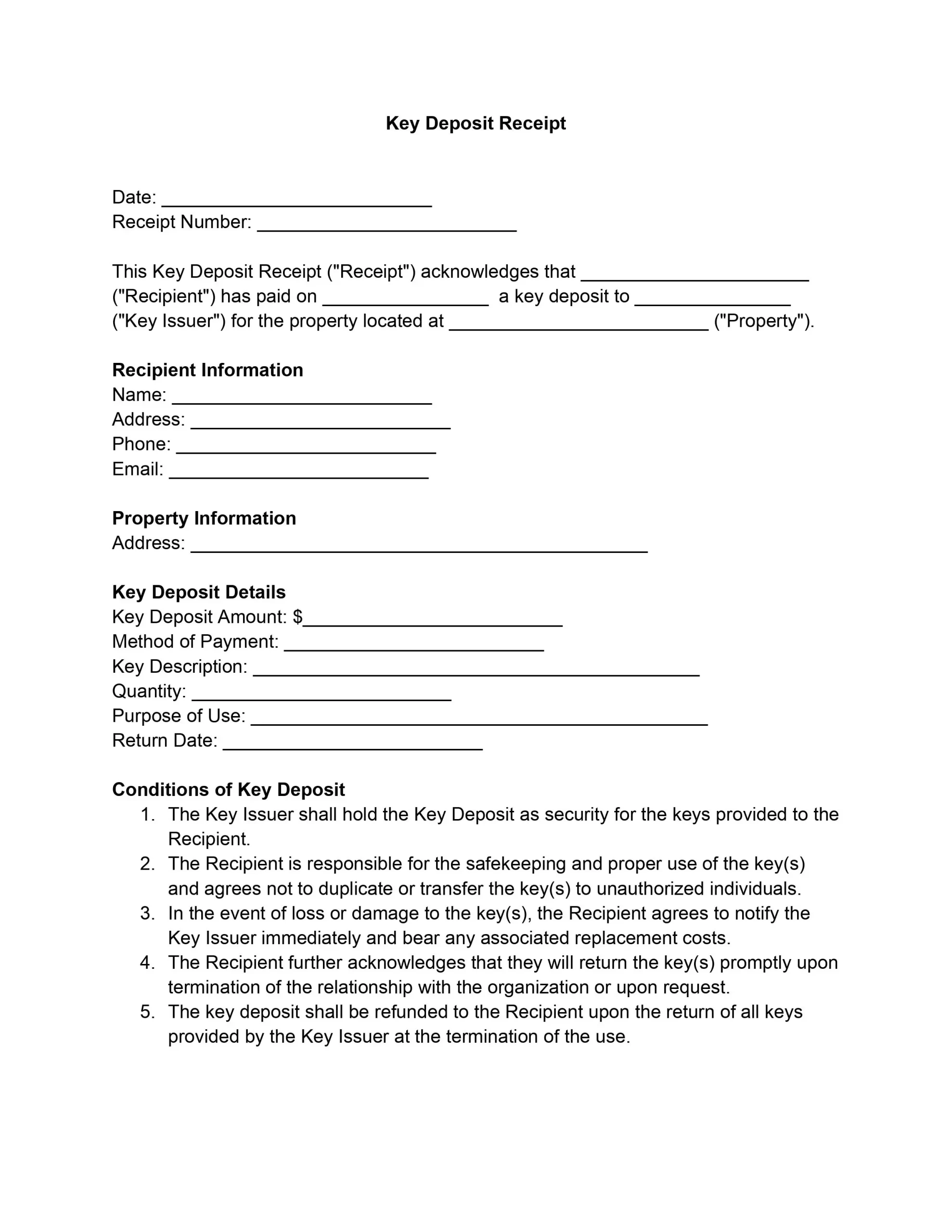In real estate and property management, the handing over keys between parties is a turning point of trust and responsibility. The importance of this act cannot be overstated, whether it is handing over office keys to a new tenant or lending a spare set for a vacation home. In such cases, the key receipt is a seemingly simple but important document that establishes trust between the key issuer and the recipient.
A key receipt is a tangible record of the agreement, protecting both parties. For the key issuer, it provides a record of the keys delivered and ensures that the recipient is responsible for their safekeeping. For the other party, it serves as proof of the trust placed in them and clarifies their obligations regarding the keys.
Importance of a Tenant Receipt of Keys
By formalizing the handover of keys with a written receipt, both the key issuer and the recipient gain security. This document is a tangible expression of trust, recognizing the recipient’s responsibility for the property and its access. Furthermore, it serves as a protection, protecting the issuer against unlawful access or use of the property.
Furthermore, a key receipt’s relevance stems from its capacity to communicate clearly about the terms of its use. It precisely defines expectations for the handling, return, and potential consequences of misplacing or damaging the keys. This clarity is critical because it prevents misunderstandings and sets a predefined course of action should issues arise. Thus, a key receipt strengthens confidence and security and assures all parties agree on the terms and duties, resulting in a respectful agreement.
How to Fill Out Key Receipt Form
Following these steps guarantees that the key deposit is acknowledged, defining the recipient’s duties and agreements with the key issuer.
1. Date and Receipt Number
Enter the current date and the receipt number at the top of the document to officially record when the key deposit transaction is taking place.
2. Acknowledgment of Deposit
Fill in the blank spaces to acknowledge that the recipient has paid a key deposit to the key issuer for the specified property. Include both parties’ names and the date of the deposit.
3. Recipient Information
Provide comprehensive details about the recipient, including their name, address, phone number, and email. This section identifies who is receiving the keys.
4. Property Information
Specify the address of the property to which the keys belong. It clarifies the location of the key access.
5. Key Deposit Details
This section outlines the specifics of the key deposit agreement, detailing the key deposit amount, payment method, description of the keys, number of keys provided, the purpose for which the keys will be used, and expected return date.
6. Conditions of Key Deposit
Review and confirm the conditions under which the key deposit is held. This section outlines the recipient’s responsibility for the keys, procedures in case of loss or damage, and the agreement to return the keys upon termination of use or request. This portion sets clear expectations and responsibilities for the handling of the keys.
7. Signatures
Both the recipient and the key issuer should sign the receipt. Include the dates next to the signatures to finalize the agreement and acknowledge acceptance of the terms and conditions related to the key deposit.
